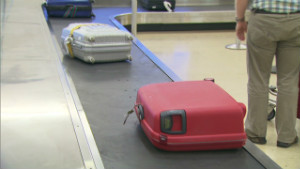(CNN) -- Call it the incredible shrinking legroom, or call it an airline seating trend. Whatever you want to call it, tall travelers should take note.
JetBlue and Canada's WestJet are cutting legroom for some nonpremium seats. At the same time, they're increasing legroom for seats in higher-priced sections.
JetBlue, a longtime champion of legroom, still says it offers the "most legroom of any other carrier throughout coach." Now it's cutting leg distance from 33 inches to 32 inches in 11 rows aboard its fleet of 52 Embraer E190 planes.
The extra space will be taken up by two more rows of seats near the front of the cabin with 38 inches of legroom. The change puts JetBlue on track to rake in $150 million in additional revenue this year, says a spokeswoman.


Alberta-based WestJet says it's making a similar change, cutting about an inch of legroom from its regular seats and adding four rows of seats with 36 inches across itsentire fleet of 737s by the end of the year.
The remaining rows will have "31 or 32 inches," the airline says, depending on various factors. The seat count will stay the same, except WestJet will add eight more seats to its 737-800s.
Traditionally known as a leisure airline, WestJet hopes the roomier seats will attract more business travelers. It started a new Toronto to New York La Guardia route in June.
"We know there are a lot of business travelers who are essentially flying in the back of larger aircraft that have first class and business cabins, but their companies don't support first class for business travel necessarily," says WestJet spokesman Robert Palmer. "Those people we think are looking for home."
Earlier this year, Southwest announced similar legroom changes, with some seats moving about an inch closer together -- to 31 inches.
We checked in with our expert, who worked for the U.S. Air Force studying body measurements and airline seat design for decades.
Dr. Kathleen Robinette says the key body measurement here isn't called "legroom," it's called the buttock-knee distance.
Technically, it's the measurement from the back of the butt to the front of the knee.
In fact, several factors come into play regarding legroom comfort.
Our butts squish in different amounts.
Kathleen Robinette, airline seating expert
Kathleen Robinette, airline seating expert
"Our butts squish in different amounts depending on how much muscle and how much fat," says Robinette, who heads Oklahoma State University's department of design housing and merchandising. "Fat squishes more than muscle."
Also, our thighs compress somewhat, she says. "So that makes a difference in where your legs fall in the space -- as does how much the seat cushion compresses. All those factors interact with each other."
Typical legroom, known as "seat pitch" in the industry, measures between 31 to 35 inches.
Aboard Spirit Airlines, legroom in some rows measures about 28 inches. That's OK for Americans, but Dutch passengers might want to consider knee pads. "Twenty-eight inches wouldn't be long enough for the Dutch," Robinette jokes. "The Dutch are the tallest people in Europe. They're about five inches taller than your average American."

No comments:
Post a Comment